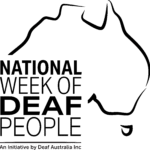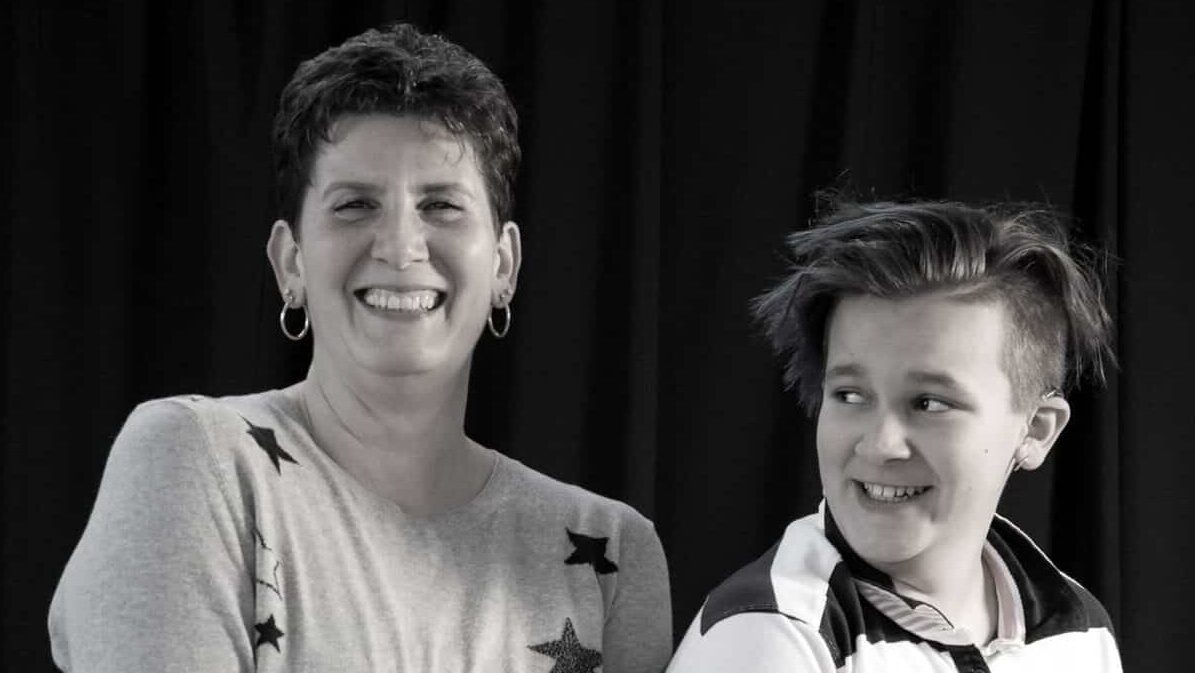This year Deaf Children Australia launched a new program to feature Auslan, the sign language of Australia’s Deaf Community, through traditional storybook reading for kids.
Whilst someone reads a storybook out loud, to a mixed audience of hearing and DHH (deaf or hard of-hearing) children, Auslan storytellers sign the story. This engaging ‘theatre’ creates an inclusive,interactive experience that delights and educates.
The program has been designed for schools,libraries and public settings—anywhere children can be captivated by a storybook and fascinated by learning Auslan live.
Deaf Children Australia provides two Auslan storytellers, both DHH people who use Auslan in their everyday life. These storytellers work closely with their English-speaking Storytime counterparts to select appropriate books, such as the Platypus Playhouse series (pictured). The key benefit of the Platypus Playhouse range is each book incorporates Auslan into the stories.
Deaf Children Australia provides two Auslan storytellers, both DHH people who use Auslan in their everyday life. These storytellers work closely with their English-speaking Storytime counterparts to select appropriate books, such as the Platypus Playhouse series (pictured). The key benefit of the Platypus Playhouse range is each book incorporates Auslan into the stories.
At the launch…
The program launched with an under-5s Storytime at Braybrook Library in Victoria, where Auslan signers Laura Sampson and Precious Dennis “signed along” to Pip and Annie go to the Country.
Precious signed in Auslan along with the reader, while Laura sat among the children to instruct and give the gathering another visual perspective on her signing.
“Where I was sitting with the families, it was so lovely to see the children completely involved in watching Precious sign the story,” says Laura.
“I was proud to see they were fully immersed and were excited and encouraged to try and use Auslan. It’s very interactive and visual for the children to watch and listen at the same time. All children get fully immersed in the bilingual storytelling.”
Children, says Precious, are engaged “from the first page to the last”, telling her that “we really like watching the person signing” and “we like being part of the story”\
About Auslan
Auslan is Australian Sign Language, the language of the Australian Deaf Community. Auslan is a distinct language, does not follow English sentence structure and has its own grammar and syntax. Many people assume Auslan is simply ‘English on the hands’, however, it has its own lexicon and structure, conveying meaning using distinctive handshapes, movements, facial expressions and the use of space.
For deaf kids as well as hearing kids
Deaf Children Australia Head of Marketing Renee Fayad says the bilingual Storytime project was developed to bring Auslan instruction to DHH as well as hearing children, who can also benefit from learning sign language.
“Today’s priorities are about accessibility and inclusivity,” says Renee. “Research indicates that bilingual children, including those who learn both sign language and spoken language, often exhibit superior problem-solving abilities and critical thinking skills.”\
A hearing mum and her three-year-old hearing daughter are regulars at Braybrook Library Storytime. Mum says she’s opted to homeschool her daughter and teach Auslan as her second language.
“We love coming to Auslan Storytime,” says mum, “I love how engaged my daughter is and the fact that she tries so hard to copy the signs delivered by the Auslan specialist. My husband and I are both hearing, but we’ve selected Auslan as we feel it’s a critical skill to have for the future. We’ll all be able to communicate across a crowded room!”
The value of sign language education
Renee explains sign language education is a valuable skill for DHH children as it provides them with a means of communication, social connection and cognitive development.
“Learning Auslan allows children to communicate with their peers, family and educators, fostering a sense of belonging,” she says, “all vital connections for emotional wellbeing.
“When deaf children can communicate freely, they become more likely to develop self-esteem and confidence, essential components for healthy development.”
Renee continues to say that early exposure to Auslan is essential, as the critical period for language acquisition in children occurs in the first few years of life.
“If deaf children are introduced to sign language early, they’re also more likely to develop stronger language skills, which obviously leading to better education outcomes.
“Conversely, delayed exposure can hinder language development and create challenges in literacy and academic achievement later on.”
Inclusion, she says, is another important aspect of sign language education. “By teaching sign language in schools through programs like our Auslan Storytime, educators promote an inclusive environment where deaf and hearing children can learn from one another.”
Bringing Auslan Storytime to your school
DCA can partner with an education provider or community services to deliver Auslan Storytime, and the program can be tailored to the audience, age groups and service involved.
“In partnership, we can establish how long the program should run and how often,” says Renee.
“For example, DCA is currently in partnership with two councils to provide 20 weeks per term of Storytime at nominated local libraries.”
Contact Deaf Children Australia for more information.







